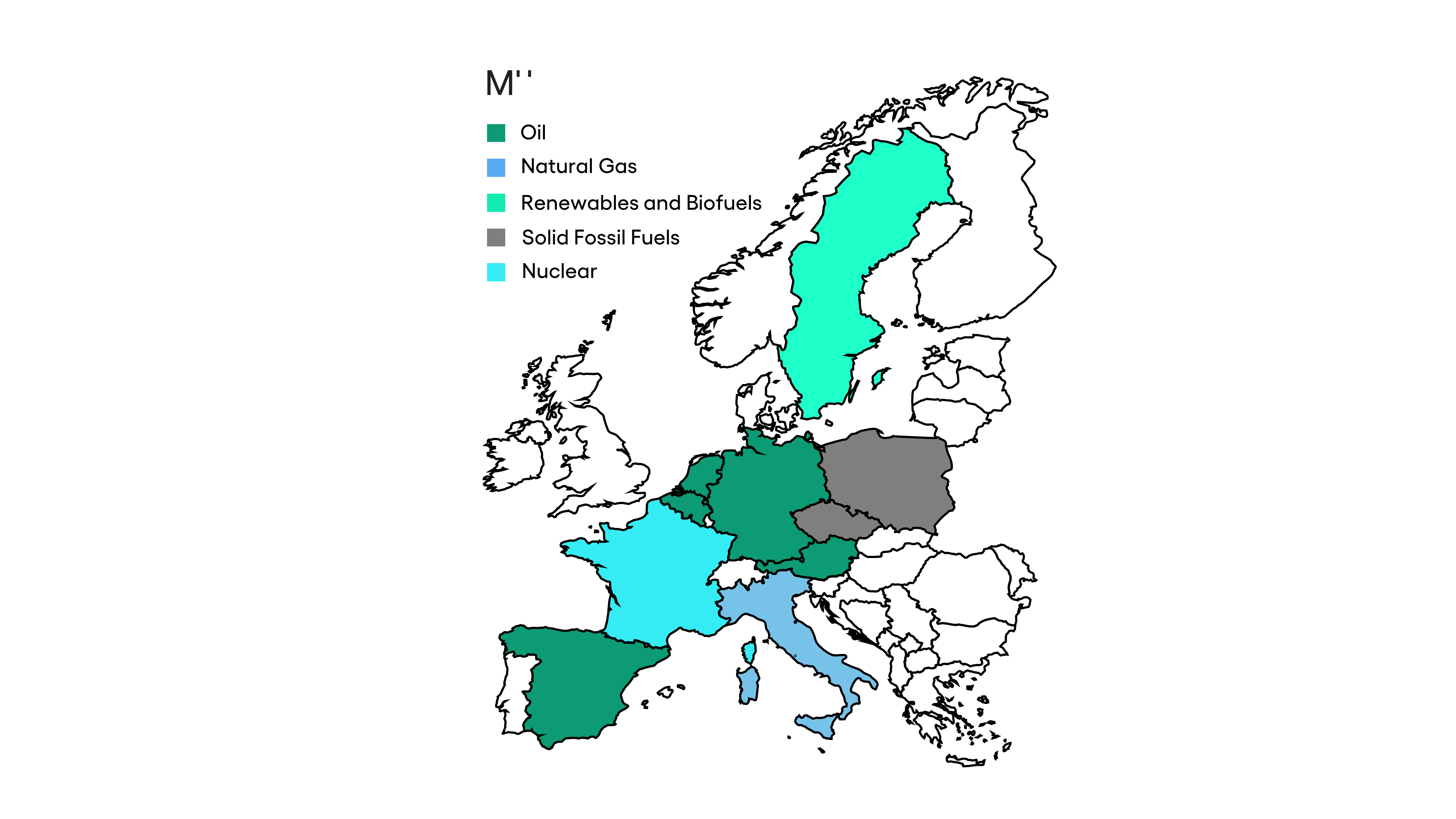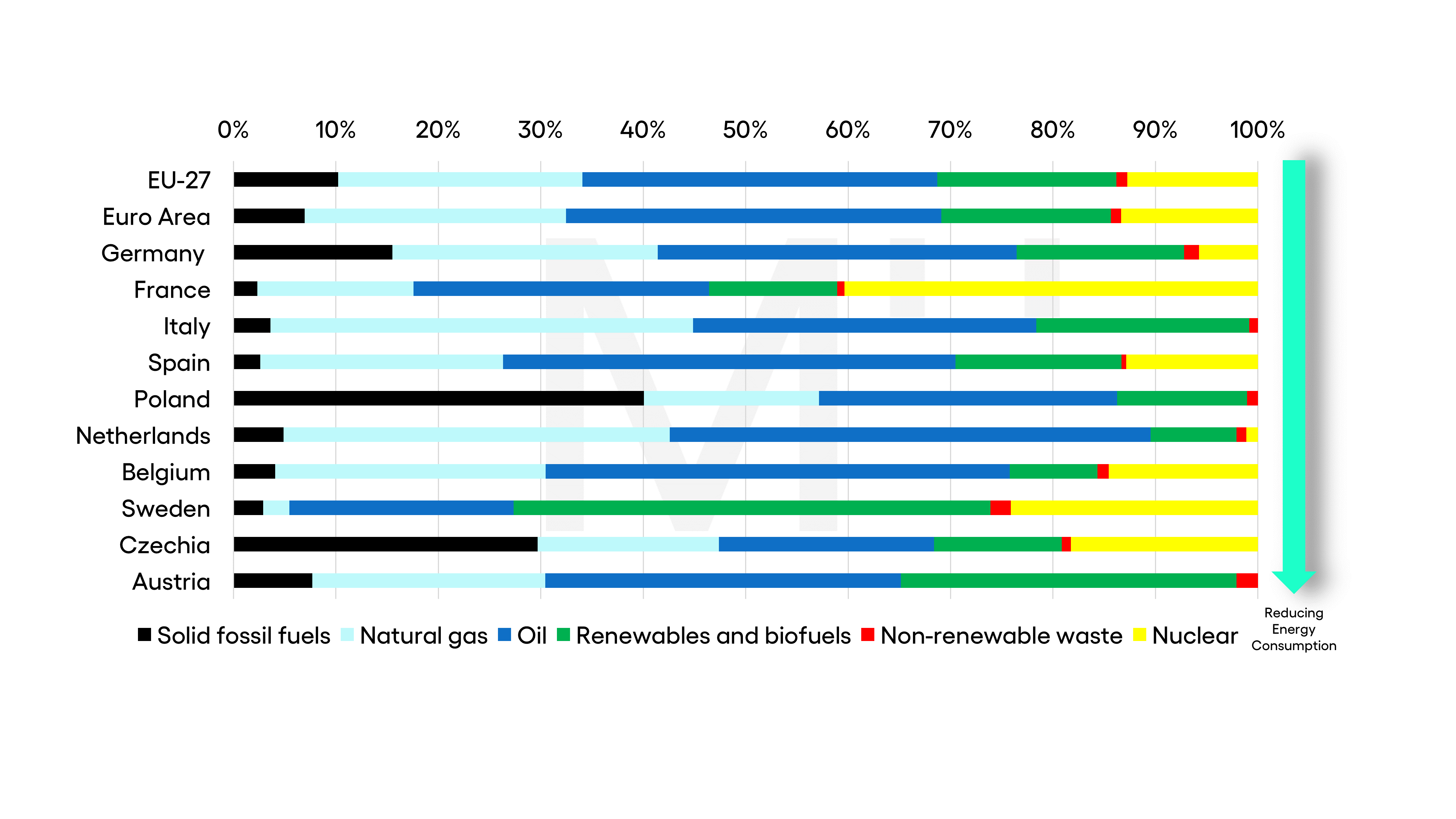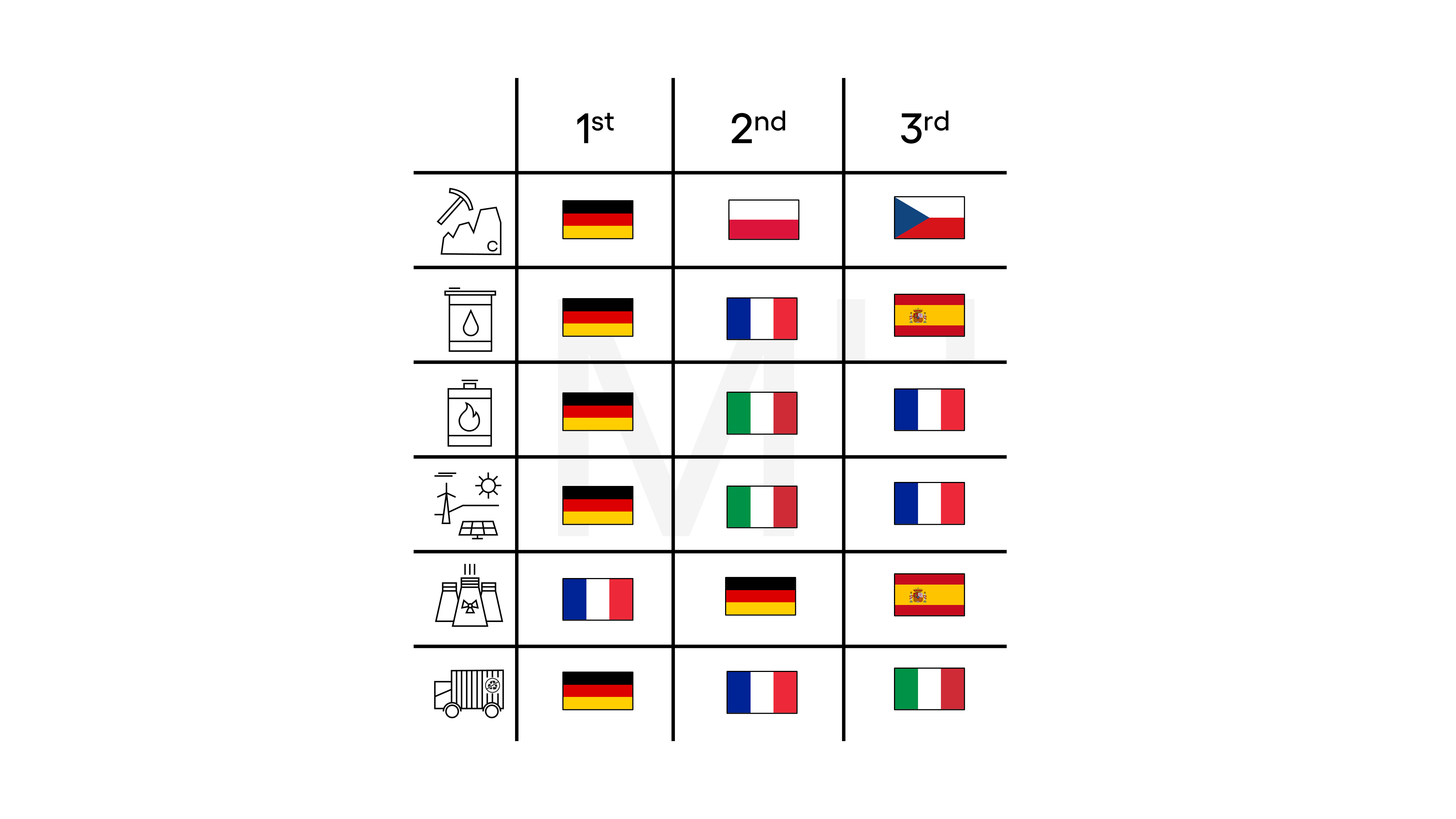The gross energy mix of the European Union (EU) lies on a spectrum of polluting and non-polluting technologies. With a high dependence on fossil-fuels which are either sourced indigenously or imported over land and sea routes. Currently over 65% of the Union’s energy comes of carbon-based sources, namely coal; gas; and oil – out of which 10% is accounted from lignite and bituminous coal.

Primary consumption of coal occurs in the electricity sector, where mine mouth powerplants produce cheap but polluting electricity. However, the economic case for such projects is eroding since the introduction of carbon taxes in the EU internal energy market.
Oil is primarily used for transportation applications such as road, sea and air transport, and is forecasted to remain the primary fuel due to hard technical and economical limits. Additionally it also serves the need for space and process heating and as backup fuel for generators and offsite applications.
Natural gas is used as cross-sectoral fuel with wide ranging applications in electricity, heating, residential, commercial and industrial sectors. Application of nuclear technology is primarily concentrated in largescale centralized electricity generation.
Delving further into the data reveals that the energy mix of individual countries among EU-27 are a function of their individual geography and geology, and are deeply rooted into their cultural landscapes, and their political settings. Not to mention the economic considerations which add another layer of complexity to an already complex forcing function.
For example, due to the diversified nature and location dependency of renewable energies, the make-up varies significantly from region to region. Countries with abundant and fairly accessible hydro resource such as Austria and Sweden rely heavily on cheap hydroelectricity, while countries having access to consistent all-year round onshore and offshore wind resource, like Germany, have significant wind contribution to their energy mix, mostly in the electricity sector.

Another aspect to consider is the historical factor and existing infrastructure of the European Energy Sector. Historically the European economic growth over the last two centuries has been largely supported by coal in its various forms. Citing to that, large processes and industries have been designed around coal being used as the primary energy source, especially in metallurgical process such as blast furnaces.
That being said, currently Poland and Czechia are among the biggest consumers of coal; where the electricity sector exhibits high dependence on solid fossil fuels. In the case of Poland more than 90% electricity is generated from coal and 20% comes from just one plant.
Energy is the driver of economic growth and is often treated as a proxy for economic activity. However due to energy efficiency measures the trends have changed a bit; the economic growth in the developed economies appear to be slowly decoupling from the energy demand. Meaning economies maintain an upward trajectory while maintaining or even lowering their energy demands.
Nonetheless, the top energy consuming countries in the EU are also among the top performing economies. namely: Germany, France, Italy, Spain, Poland, Netherlands, Belgium, Sweden, Czechia and Austria. An outlier on this trend is Ireland, which performs relatively well economically with less energy consumption.

Germany is the biggest consumer of energy in EU – accounting for 20% of the block energy demands, followed by France and Italy. Not only that, Germany is also the biggest consumer of all of the primary energy carriers – except for nuclear, where France is the leader.
Even with Poland’s near exclusive reliance on coal for electricity production and Germany’s Energiewende, Germany still remains the biggest consumer of coal derived energy in the European Energy Market. It is also no surprise that, the three biggest economies and the three biggest energy consumers also lead in most categories, with inherent preferences of energy carriers due to the reasons cited above.
Hydrogen is still in its infancy phase globally and any significant input to the European energy sector is yet to be observed. With long-term Greenhouse gas reduction targets and undergoing negotiations with North-African and Middle-Eastern countries for future hydrogen supplies, the landscape is expected to shift in the future.
Approach:
The data above only considers primary fuels as a source for gross energy calculations. The sources represent gross energy consumption of the countries and do not represent the final energy consumption of each source after conversion losses.
‘Nuclear’ represents the total heat generated, this heat is then used to generate electricity. Electricity exports and imports are not taken into consideration.
Only the largest energy consuming countries are represented on the map. The article is based on Eurostat dataset NRG_BAL_S for the year 2020.